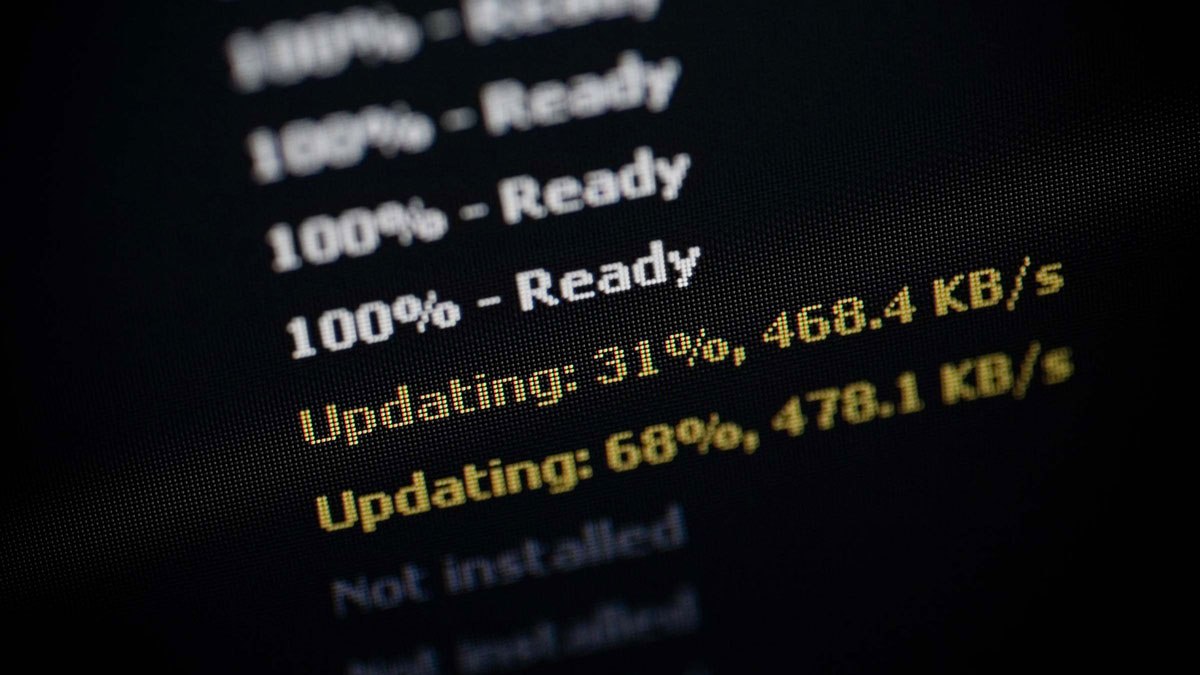We all know the phrase, “time flies”. If you’ve lived enough you know this to be true whether or not you’re having fun. And in terms of the world wide web, time flies at warp speed, in the blink of an eye. Today’s websites and everything connected to the internet, is dynamic and should be treated as such. When it comes to your website I highly recommend updating at least every two weeks or once monthly if you’re stretched for time. But why you ask? Well, here’s the short-ish answer of Why You Need a Website Maintenance Plan.
Your website runs on several platforms and as each of them update their respective software in terms of security updates, patches, features, functionality and behind the scenes code, the domino effect kicks in and each domino must fall in line.
Sticking with the domino analogy, the 1st domino is the device you’re viewing this article on; a desktop, Mac or a PC, tablet or mobile, Android or IOS. As each new device drops a new software and/or hardware release the ante is upped. The front-end domino is your websites browsers; Explorer, Firefox, Chrome, Safari, Opera, etc. From the backend on your server you’re looking at the Server Operating System, Web server App Server, Database Server, etc. Then there are the hosting control panels such as Plesk Onyx, cPanel, Webmin, ISPconfig, and Zpanel to name a few. Then, if you haven’t skipped this geeked out paragraph yet, there’s the backend language of PHP, Perl, etc. Oh, there’s also the ever-evolving HTML, JavaScript and CSS. Let’s just say there’s a lot going on.
Now let’s focus on my preferred platform for website design and development, WordPress releases a lot of updates. About three times a year WordPress releases major updates. In between the major versions, there are minor updates which happen automatically. For WordPress 3.7+, minor updates occur automatically, however, major updates must be made manually. To expand the basic functionality of the WordPress environment there’s the Theme and Plugins, which, if you’ve selected wisely, must stay abreast of all the above updates and also add their own functionality flavor to the mix. And all these software and codes must dance in sync with each other whilst everyone is moving swiftly. Do you have a website maintenance plan to keep up with all the moving parts?
Security Updates
This should motivate you, just one word, HACKERS. The safety of your investment, information and your customers’ information should be the most important reason for keeping your website updated. Some customers treat their website like an absentee landlord or as if they’ve just printed static brochures and left it in a coffee shop for their customers to find it. The digital world is anything but static. Sort of like a brick and mortar store, you need to keep the lights on, check that the doors are secure, make sure the plumbing hasn’t backed up and the plants are watered and weeded. But unlike a brick and mortar business, there’s an almost infinite amount of moving parts to keep track of, hence the vigilance. Security updates will help prevent hackers and/or their bots, malware from hijacking your valuable real estate. The longer you go without updating your website the more chances are you will be hacked. Just like in life, if you don’t use it you lose it. Your old software has already been hacked, on another abandoned website, and hackers know and can find your websites weak points to digitally slide in to steal your data or plant malicious codes on your website. The WordPress community is the virtual version of neighborhood watch working in conjunction with your security company. Of course, you have a secure username and password but that’s another article.
Performance
Increasingly new hardware is created as part of “the internet of things”. They house computers and all computers run on software as code. Besides increased security, updating the WordPress core and plugins will repair bugs and glitches that naturally occur because the software is in the real world reacting and interacting in ways coders could not have foreseen. Basically, the system is always being optimized for the best user experience for the site administrators and your customers.
Features
With each new update comes new features. As a new version of WordPress or a new version of a plugin is released an array of new features are sometimes added. At times a function of a much-used plugin is integrated into the core of WordPress, or a plugin adds a much requested featured which eliminates the need to configure another plugin. The entire system is optimized.
Backup, Backup, Backup!
Of course, before you jump in to update it is essential, and I cannot stress this enough, to BACKUP! and store the backup files off-site. Because life happens and it’s best to have the security of a backup just in case the new updates don’t play well with each other. It’s doesn’t happen often but it happens. Before you initialize your website maintenance plan you need to backup, backup, backup and mo’ backups?
Conclusion
Is it 100% necessary to keep your website updated? No, it is not, because it’s not a life or death situation. But if you want to protect what matters most, your information and your customer’s information, it is very necessary. It is very important to keep your website updated and performing at its best, you don’t want to risk missing a software update that could put you at risk for a security breach or interfere with your website visitor’s experience. If you’re wondering how you can possibly keep track of all the updates and needs of your WordPress site, contact me to put together your custom Website Maintenance Plan.
